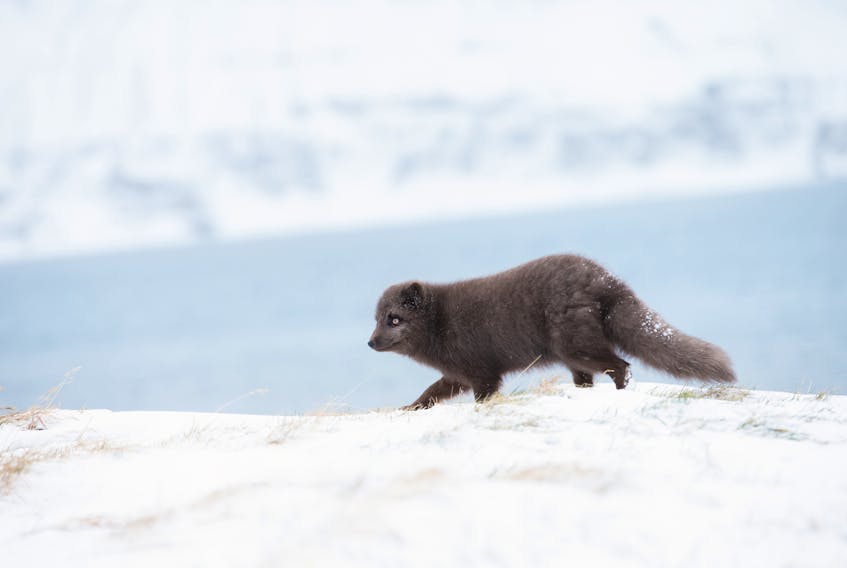An Arctic fox left researchers at the Norwegian Polar Institute in disbelief when she travelled more than 3,500 kilometres from Norway to Ellesmere Island, Nunavut in just 76 days last year.
Scientists fitted the young blue fox (just under a year old at the time, according to the BBC ) with a tracker and monitored the vixen as she departed her home on the east coast of Spitsenbergen, the Svalbard archipelago’s main island, on March 26, 2018.
After 21 days and a 1,512-kilometre hike across frozen sea, glaciers and ice sheets, she reached northern Greenland on April 16.
On June 10, 2018, the female fox touched Canadian soil after travelling a further 1,990 kilometres, the study reported .
The fox was travelling so fast, researchers couldn’t believe it at first. Eva Fuglei, one of the researchers, thought that perhaps the fox had been killed and brought aboard a boat.
Fjellreven vandret via havisen fra #Svalbard i Europa til #Canada i Nord-Amerika i et tempo ingen forskere tidligere har dokumentert. Foto: Elise Stømseng Les mer: https://t.co/Gk3xirq3YE pic.twitter.com/adzOVNFfyx
— Norsk Polarinstitutt (@NorskPolar) June 26, 2019
“ But no, there are no boats that go so far up in the ice. So we just had to keep up with what the fox did,” she said, according to a translation of a release on the study.
The vixen would travel an average of 46.3 kilometres per day, and on one day travelled a shocking 155 kilometres as she made her way across Greenland. “This is, to our knowledge, the fastest movement rate ever recorded for this species,” the study said.

“The sea ice plays a key role in the fact that mountain foxes will migrate between areas, meet other populations and find food,” Fuglei told the Guardian , adding that it was the first time the scientists studied the migration of the Arctic fox in detail between continents and ecosystems.
Despite her high travel averages, there were two occasions where the fox trekked less than 10 kilometres in a 48-hour timespan. The scientists believe this was either due to bad weather, or that she came across an abundant source of food and stopped to eat.
The fox’s long journey to Canada has also raised concerns over climate change.
“ This is another example of how important sea ice is to wildlife in the Arctic. The warming in the north is frighteningly fast,” said Norwegian Minister of Climate and Environment Ola Elvestuen. “We must cut emissions quickly to prevent the sea ice from disappearing all summer.”
Though the fox’s Nordic diet consisted of mainly marine birds and life, when she migrated to Canada, she feasted mainly on lemmings. In winter, when food is scarce, Arctic foxes tend to eat on the scraps left behind by polar bears.
Sadly, after her record-breaking trip, the fox’s final fate is unknown; in February of this year, her tracker stopped working.
Copyright Postmedia Network Inc., 2019









